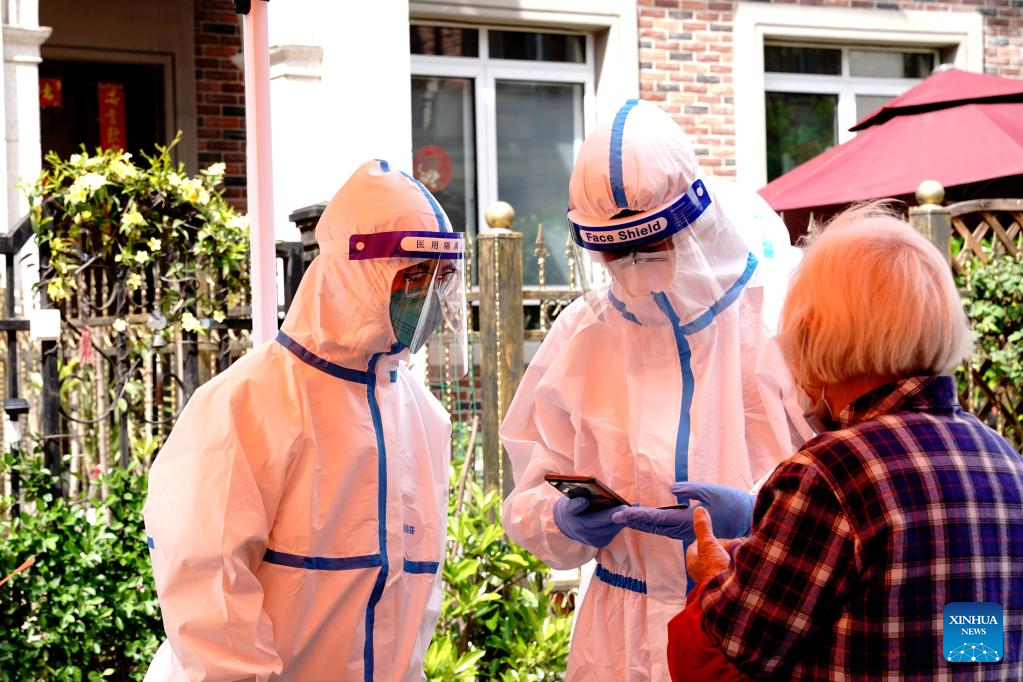Experts share views on achieving the dynamic zero-COVID in Shanghai


Comprehensive nucleic acid testing, along with the management and control in key areas for high-risk groups to be crucial in cutting off the chain of virus transmissions in Shanghai, Chinese medical experts said recently.
As the epidemic through the city is still at a high level, some experts shared their views on how to achieve "dynamic zero-COVID" at a community level in the quickest amount of time, People's Daily reported on Wednesday.
"Once an infection was reported, there might have already been more infections in families or work units related as the Omicron variant has a rapid and stealthy transmission," said Chen Xin, deputy head of a work group under the Shanghai Municipal Center for Disease Control and Prevention.
"A strategy of combing nucleic acid test and antigen test should be dynamically adapted to improve the timely diagnosis of an infection," she said.
Lu Shan, a researcher from the infectious disease department of the Chinese Center for Disease Control and Prevention suggested different priorities should be presented based on the current screening strategy.
According to her local medical institutions, disease control departments and the elite groups from the third-party testing agencies should be arranged for the worst-hit regions to guarantee fast identifications of those infected.
The method of taking two antigen tests plus one nucleic acid testing for rapid results should be adopted at places like villages downtown, large constructions sites, etc, to prevent the likely outbreak of infections caused by a chain of clusters.
"The management and control of the city's old residential areas and rural housings for rental, which are hard to reach out to, should be strengthened," said Wu Fan, vice-dean of Fudan University's Shanghai Medical College. He said that professional teams should be organized to focus on the residential communities and enterprises which see the continuous rising infections.
Wu said under the three-zone epidemic control system, they can lower the frequency of screening in the communities when the epidemic improves, to save the costs. For the areas where the epidemic remains at a high level, testing and the transfer of infected residents to quarantine centers should be accelerated.
Experts also suggested to effectively increase the vaccination rate of elderly people in the city.
At present, the overall COVID-19 vaccination rate in Shanghai is very high, but the rate of two-dose vaccination for elderly people aged between 60 to 69 is 78 percent, while elderly adults aged between 70 to 79 have a lower vaccination rate of 61 percent. For those aged over 80, the vaccination rate is only 15 percent.
Liu Yu, a researcher from Peking University's School of Public Health, said that elderly people are at a high risk of evolving into severe cases and be killed by contracting Omicron.
Globally, the mortality rate of elderly people infected by the variant is significantly higher than other groups.
It is necessary to formulate a work plan and establish a mechanism for the treatment of elderly infected patients, in order to minimize the severe conditions and deaths among them.
- Macao thrives as collaboration deepens
- Beijing reiterates strong opposition to US arms sales to Taiwan
- Attack in Taipei injures 9, including 4 in critical condition: local media
- Ministry to launch month-long program aimed at promoting youth employment
- National health body asks consumers to read nutritional information on food labels
- China's top cyberspace regulator launches drive against capital market misinformation




































